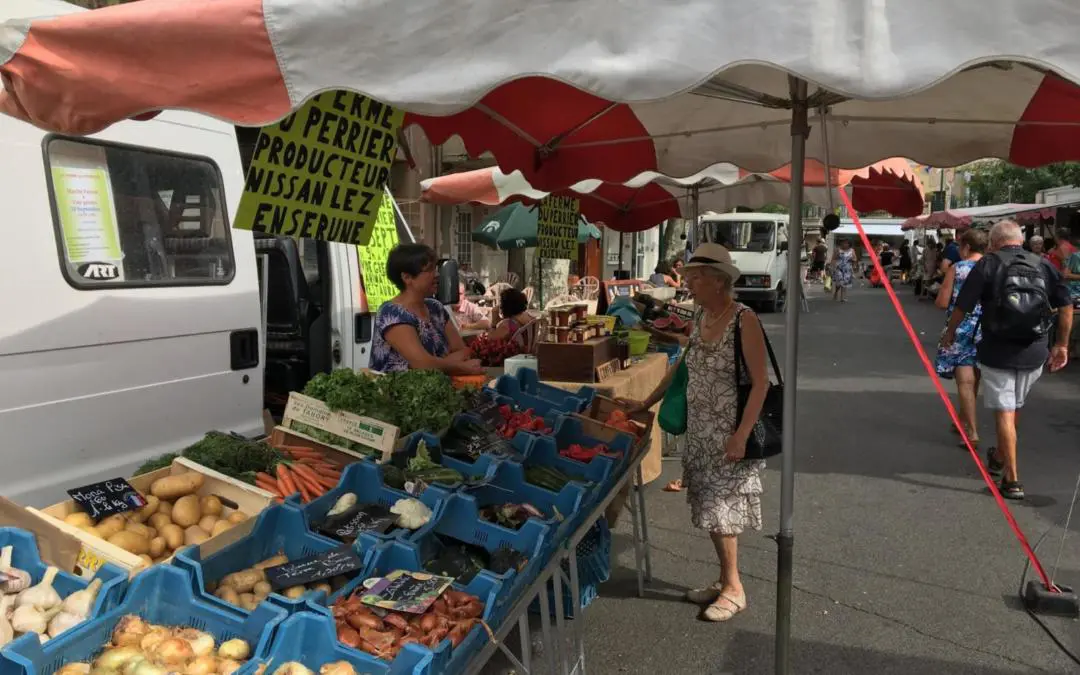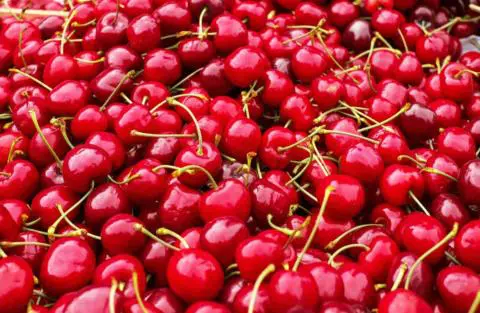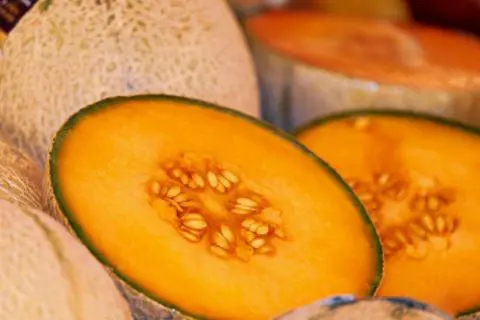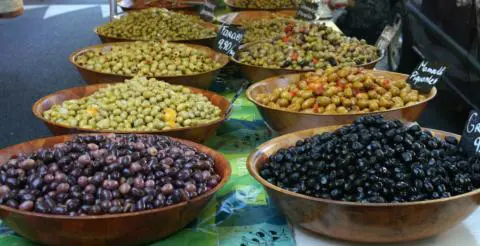The Languedoc region is blessed with a warm climate and almost 300 days of sunshine a year. Besides miles of vineyards, you’ll see loads of olive, apricot and almond trees growing in the wild. This means that renowned French cuisine benefits from fresh, local produce year round, for the pleasure of food enthusiasts.
You can find locally-sourced products in supermarkets, but the outdoor markets in towns and villages usually have the freshest fruit and vegetables. And let’s face it, a morning walk around the open air market followed by a coffee in the local café is an attractive element of the French lifestyle.
If you’re going to shop at a local Languedoc market, we’ve put together a calendar with some of the produce you can expect to find.
January – truffes
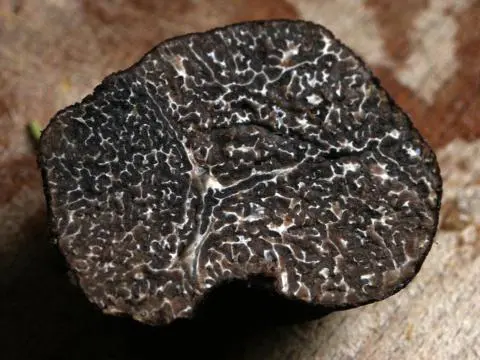
Image by WikiImages from Pixabay
The most famous of the fungi family, truffles are something that can only be grown naturally. They live on tree roots and only like very specific soil and trees. That’s what makes them quite rare and hard to find. It also makes them expensive!
February – chou, choux de Bruxelles, escarole
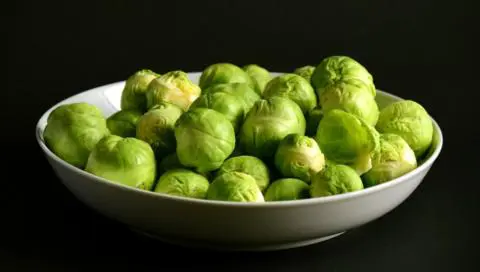
Image by Ulrike Leone from Pixabay
This is a month to eat your greens. You’ll find plenty of cabbages and Brussel sprouts, and winter salad greens like escarole. Escarole is a member of the chicory family, with broad, curly green leaves and a slightly bitter flavor. You can eat it raw, grilled, sautéed, or cooked.
March – fèves, artichauts
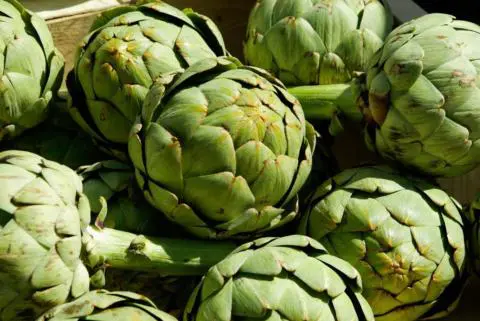
Image by jacqueline macou from Pixabay
A fève is a type of broad bean typically grown in a Mediterranean climate. Artichokes are a species of thistle and very good to eat if you suffer from high cholesterol. The simple way to cook an artichoke is to boil it for about 20-30 minutes, then eat the petals one by one, often dipped in a simple vinaigrette.
April – asperges
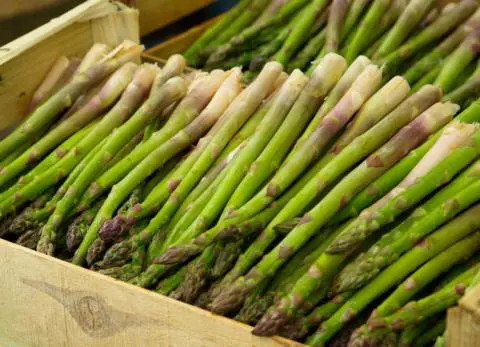
Image by jacqueline macou from Pixabay
Asparagus is a spring vegetable that is widely farmed but also found growing wild. In rural areas you will often see people carrying bundles of fresh-cut asparagus in the mornings. Only very young asparagus shoots are eaten, and they’re 93% water – so very low in calories!
May – ail, cerises
Garlic is a member of the onion family, and an almost essential ingredient in most French cuisine. As well as an important food seasoning it is also considered a medicine. In Languedoc markets you will often find a pink colored garlic (Lautrec Pink Garlic) which is very flavorful, and does not dry out when hung. Cherry trees will be laden with fruit around this time so you’ll find cherries in abundance. They are also celebrated in the town of Ceret every year at the Fête des Cerises.
June – gariguettes
Gariguette strawberries are smaller and elongated in shape and one of the first summer fruits to be available. The French began cultivating this species especially in the 1970s to avoid importing expensive strawberries from other Mediterranean countries.
July – melons, pastèques
Melons and watermelons originated in Africa but are now well established summer fruits in southern France, where they thrive in temperatures higher than 25 °C (77 °F). Typically here you will find yellow Charentais melons – a form of Cantaloupe. Delicious.
August – brugnons, figues, haricots
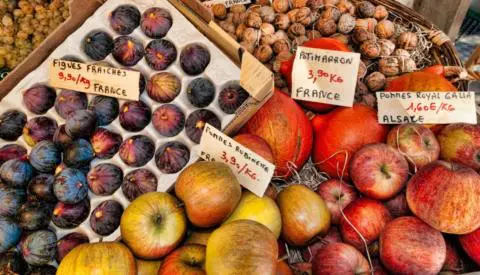
Image by Barbara Rosner from Pixabay
Nectarines (brugnons) are a variety of peach with either either yellow or white flesh and smooth skin. Figs and fig trees have been a symbol of the Mediterranean for thousands of years. Often found growing by the roadside, it is said you should not pick figs, but wait for the fruit to fall before eating it. French green beans are harvested very young before the seeds mature. You can simmer this popular summer vegetable with a sprinkle of bicarbonate of soda and then sautéed with butter.
September – épinard, girolles, bolets
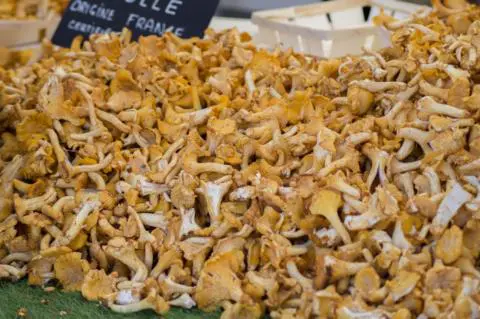
Image by jacqueline macou from Pixabay
As we move into autumn you’ll find plenty of fresh green spinach. The name spinach is taken from the 14th century term espinache. It was supposedly the favorite vegetable of Catherine de Medici, a 16th century queen of France. Dishes served on a bed of spinach are known as “Florentine”, reflecting her birthplace of Florence. Chanterelles and bolets are different types of mushrooms. Chanterelles are funnel-shaped and often pan-fried in butter or olive oil.
October – carottes, poireaux, coing
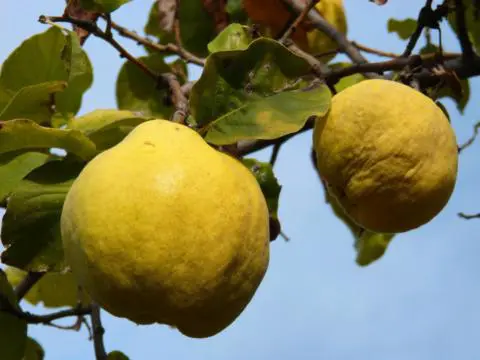
Image by Marc Pascual from Pixabay
Carrots and leeks are cultivated all over France and readily available in the autumn. Quince is a fruit that requires a Mediterranean climate and tends to show up in jellies, jams, fruit pastes or cakes.
November – chataignes, Navet de Pardailhan
Chestnuts (not to be confused with poisonous horse-chestnuts) are quite popular in the autumn. You can eat them grilled, creamed in desserts, sprinkled over vegetables or included in savory dishes and soups. The Fête de la Chataigne takes place in Saint-Pons de Thomieres every year. Navets de Pardailhan can only be grown on the plateau of Pardailhan, between Saint-Chinian and Saint-Pons de Thomières in the Hérault. The name is protected and the black skinned turnips (navets) are delicious sautéed and finished with a dash of local Muscat wine.
December – olives
Olive trees grow all across the region and olive oil is one of the core ingredients in Mediterranean cuisine. Approximately 90% of olives are harvested for oil, leaving only 10% to eat. You will find several varieties in Languedoc, like Picholine (green cocktail olive) and Lucques (large green table olive).
Having delicious food grown right on our doorsteps is a real luxury, and it reduces of lot of packaging and food miles. Food for thought – bon appetit!
For more information about local produce and regional events, see:
- http://www.escapadeslr.com/accueil-produits-regionaux-languedoc-roussillon.html
- http://www.herault-tourisme.com/deguster-5-1.html
- http://www.destinationsuddefrance.com/Sortir/Grands-evenements/(view)/embed/(categorie_event)/Saveurs
Dennelle is the President of Renestance and a bilingual American who’s lived in France since 2000. She loves so many things about France, its language, culture, geography, quality of life... that she started a business to help others realize their dreams of living in this incredible place.
All articles by: Dennelle Taylor Nizoux

